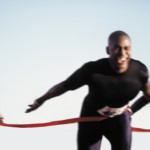 Short days and cold weather can make motivation tough. Get ENERGIZED by chatting with others sharing your journey to fitness!
Short days and cold weather can make motivation tough. Get ENERGIZED by chatting with others sharing your journey to fitness!
Join #HealthyWayMag Fitness Chat on Twitter and stay current on top gear, best exercise practices and keys to motivation. Together we solve challenges, share successes and provide accountability and encouragement along the way.
Mark your Calendar NOW:
Every Monday at 5pm(Pacific)/8pm(Eastern) #HealthyWayMag Fitness Chat on Twitter.
It’s easy to join in: Simply log into your Twitter account. Enter #HealthyWayMag to follow the chat feed. Questions for discussion are posed as “Q1″ Question 1, “Q2″ Question 2 and so on. Reply to offer your tips, ideas and experiences by notating your answer as “A1″ to designated your answer to question 1,”A2″ to offer your thoughts on the second question and so on.
Monday December 21, 2015 #HealthyWayMag Fitness Chat is Sponsored by RecoFit Compression Gear.
RecoFit Compression Gear is a go-to for many world class athletes and fitness-enthusiasts alike! Their technical-fit and uniquely designed gear helps you get more oxygen to your muscles, thereby reducing swelling and delaying fatigue. The means better performance and faster recovery! RecoFit is the only compression gear that cuts their fabric in a cross-grain process for effective compression and no-slip positioning! Check out their products such as Calf Compression Sleeves, Shin-Splint Therapy, Full Leg Compression Sleeves, and Arm Coolers to experience the RecoFit difference for yourself. Proudly made in the USA! To learn about product details and upcoming news, follow them on Twitter at @Recofit.
 Subscribe
Subscribe







